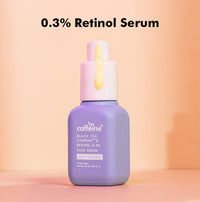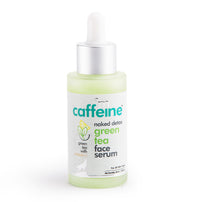We are sure you’d agree that our hair accentuates our looks. And, so we all love to play with it and style it up! This is why staying away from chemically treating your hair gets much more difficult when so many different options are available. But here’s some great news for you. You can now experiment as much as you want with your hairstyle provided you are ready to follow the tips that we are about to share with you.
Chemical treatment of any kind makes the hair dry, brittle and often leads to hair fall. Thankfully, proper care and the right products post-treatment can save you from the adversities.
Worry not, for here are some tips to take care of chemically treated hair. Read on to find out these effortless tricks to maintain the overall health of your hair.
How to repair chemically damaged hair home remedy in 6 easy ways
With a comprehensive routine for your hair care, combating the negative effects of chemical treatment won’t be hard. . Here are a few things you can do along with some product recommendations.
#1 Avoid usage of chemicals & go sulphate-free
Your hair just had major exposure to chemicals because of the treatment. Hence, it is high time to switch to a gentle and chemical-free hair care routine. The first thing to do is replace your regular shampoo with a sulphate-free alternative.
Latte Shampoo with Coconut Milk is the best product to make the switch as it is free of sulphates as well as silicones. The coffee extract also nourishes the hair from the roots and prevents hair fall. The protein strengthens the hair and the argan oil prevents moisture loss and keeps your locks hydrated after every wash.
#2 Give weekly nourishment to your hair
Your hair loses nourishment significantly after undergoing harsh chemical treatments. By treating your hair with natural hair masks, you can help it recover faster. Here’s one DIY hair mask to nourish your hair while rendering it softer and moisturised:
- Beat one egg, coconut oil, and one teaspoon yoghurt together into a smooth paste
- Apply this to your scalp, focusing on the roots and the tips of the hair
- Leave it for 15-20minutes
- Wash it off with a sulphate-free shampoo followed by a good conditioner
You can also give the nourishment your hair requires by going the simpler way and liberally applying the Naked and Raw Coffee Scalp and Hair Oil. Leave it for 30 minutes or more and wrap your hair with a hot microfiber towel during this time. Then using a good shampoo, wash it off to get soft and smooth hair.
#3 Limit the use of heat tools
Go easy on the straightener and the blow dryer when you have chemically treated your hair. If possible, keep them at bay for the time being and let your hair dry naturally. They are generally damaging even to natural hair in the long run. On chemically treated hair, they are harsher since your tresses are already dry and brittle.
If your hair tends to frizz easily when not blow-dried, use a Microfiber towel to soak most of the water off the hair. You can follow it up with a Walnut and Argan Oil Hair serum to keep it hydrated further.
#4 Take lukewarm water showers
Who does not love to relax in a hot shower at the end of the day? It feels relaxing undoubtedly, but the hot water makes your hair and scalp drier. Instead, use lukewarm water to wash your hair. It does not cause any scalding sensation to the scalp but neither is it too cold to tolerate.
#5 Protect your hair at night
The friction on your hair face while you sleep can cause frizzes, tangles and eventual hair fall. But a small hair care routine before bed can fix that all in a snap! .
You can use a Coffee Scalp Tonic which prevents breakage and strengthens the hair in the long run. Using a serum along the length of your hair further prevents it from tangling and keeps it smooth. Furthermore, if your hair is frizzy or dry, you can also switch to a satin pillowcase which reduces the friction to a large extent.
#6 Eat healthy & drink lots of water
Topical hair care can only work to a certain extent if you do not follow a healthy diet and lifestyle. The key is to incorporate a lot of protein and biotin-rich food into your diet. This includes cod fish oil, milk, eggs, pulses and vegetables. Avoid too much spice and oily food. Your digestive health directly affects your hair condition too.
Last but not the least, you must drink a lot of water. This keeps your body hydrated including the skin. As a result, your scalp will be hydrated too and it prevents related problems like dandruff.
Treat your hair right
Do not hold yourself back from trying out that new hair colour trend out of apprehension for your hair and scalp health. No sweat! Because now you know all the tricks to nourish your hair and scalp post-chemical treatment, enjoy the experiments. Just keep the right hair care products at hand and you are good to go!
FAQ
Q1: How often should I use hair masks to nourish my chemically treated hair?
A1: It's recommended to use hair masks once a week to provide extra nourishment to your chemically treated hair. You can either use a DIY hair mask with natural ingredients or opt for a ready-made hair mask specifically designed for chemically treated hair.
Q2: Can I still use heat styling tools on my chemically treated hair?
A2: It's best to limit the use of heat styling tools on chemically treated hair as it can cause further damage. If you must use heat tools, make sure to:
- Apply a heat protectant spray before styling
- Use the lowest heat setting possible
- Avoid using heat tools too frequently
Q3: What are some essential nutrients I should include in my diet for healthy chemically treated hair?
A3: To maintain healthy chemically treated hair, include the following nutrients in your diet:
- Protein-rich foods like eggs, fish, and lean meats
- Biotin-rich foods such as nuts, seeds, and whole grains
- Omega-3 fatty acids found in fatty fish, flaxseeds, and chia seeds
- Vitamins A, C, and E from fruits and vegetables
Q4: How can I protect my chemically treated hair while sleeping?
A4: To protect your chemically treated hair while sleeping, you can:
- Apply a leave-in conditioner or hair serum to keep your hair moisturized
- Braid your hair loosely or tie it in a silk scarf to minimize friction
- Use a satin or silk pillowcase to reduce tangles and frizz
Q5: What are the signs that my chemically treated hair needs a trim?
A5: Chemically treated hair is more prone to split ends and damage. You may need a trim if you notice the following signs:
- Your hair feels dry and brittle, especially at the ends
- You have a lot of split ends or your hair appears stringy
Your hair tangles easily and is difficult to manage
Regular trims every 6-8 weeks can help keep your chemically treated hair healthy and prevent further damage.












